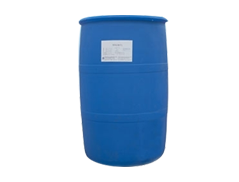The test set up two treatments with and without surfactant (APG) and control (CK), and each treatment was repeated for 3 times. The addition amount of surfactant APG is 100mg kg − 1 (stacking). During the stacking process, samples were collected from different parts of the compost on the 0d, 3D, 5D, 7d, 14d, 21d and 28d of the compost, and the microbial quantity and enzyme activity of the compost were determined after full mixing. The test lasted 30 days (from August 11 to September 9, 2008).

The composting temperature is measured by PT-100 platinum electrode at the central part of the compost at 10:00 a.m. and 17:00 p.m. every day. Microbial quantity was determined by plate colony counting method [29]. The culture media used for counting bacteria, actinomycetes and fungi were beef extract peptone agar medium, Bengal red agar medium and modified Gauss No. 1 medium.
Determination method of enzyme activity: urease activity is determined by taking urea as the substrate for enzymatic reaction and measuring the amount of ammonia generated to express urease activity; The determination of catalase activity adopts the titration method. Under acidic conditions, titrate the hydrogen peroxide in the reaction mixture with 0.1mol L − 1 potassium permanganate. The volume of hydrogen peroxide is obtained according to the concentration and volume of potassium permanganate and the concentration of hydrogen peroxide. The hydrogen peroxide consumption before and after the reaction is used to express the catalase activity, and the activity unit is mmol g − 1; Invertase activity was determined by 3,5-Dinitrosalicylic acid colorimetry after sucrose was hydrolyzed by invertase to produce reducing sugar. The unit of activity was Mg (glucose) g − 1 24h − 1; DNS method was used to determine cellulase activity, that is, carboxymethyl cellulose sodium salt was used as the substrate to produce reducing sugar after cellulase hydrolysis, and then 3,5-Dinitrosalicylic acid method was also used to determine the content of reducing sugar. The unit of cellulase activity was μ g·min−1。
Biosurfactants are a new type of surfactants produced by microorganisms. Compared with chemical surfactants, biosurfactants have many advantages, such as low toxicity, degradability, ecological compatibility, high efficiency and stability. Therefore, biosurfactants are not only widely used in oil exploitation and transportation, pharmaceutical industry, food industry, textile industry and cosmetics industry, More and more attention has been paid to its application in the field of environmental engineering, especially in soil remediation. Adding biosurfactants in the aerobic composting process of solid organic wastes can improve the microenvironment of composting, promote the degradation of organic matter and accelerate the composting process.
However, only a few biosurfactants have entered the market, and most of them are in the stage of experimental research, mainly because of their high production costs. It is estimated that biosurfactants are 3-10 times the cost of chemical surfactants. At the same time, some bacterial agents producing biosurfactants, such as Pseudomonas aeruginosa, are prohibited strains for agricultural composting and microbial fertilizers. Therefore, the application of biosurfactants in agricultural composting is greatly limited. According to literature reports, the addition of chemical surfactant Tween-80 can increase cellulase activity and promote the biodegradation of cellulose. The application of chemical surfactants in aerobic composting to accelerate the composting process has been rarely reported.